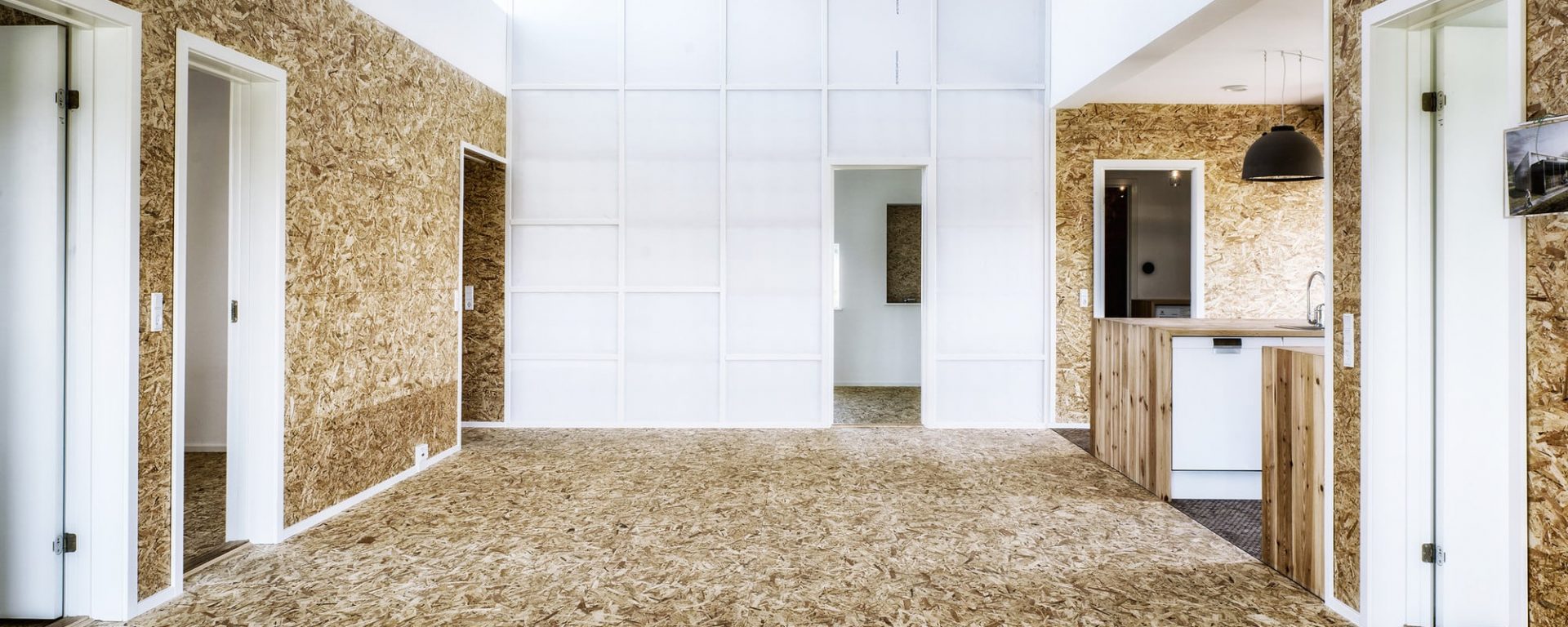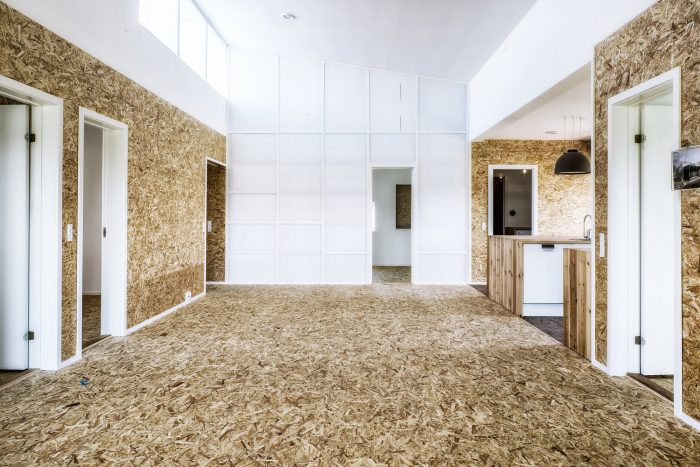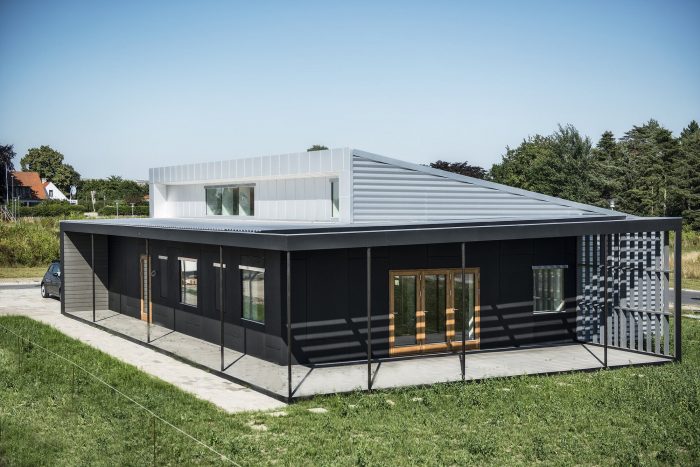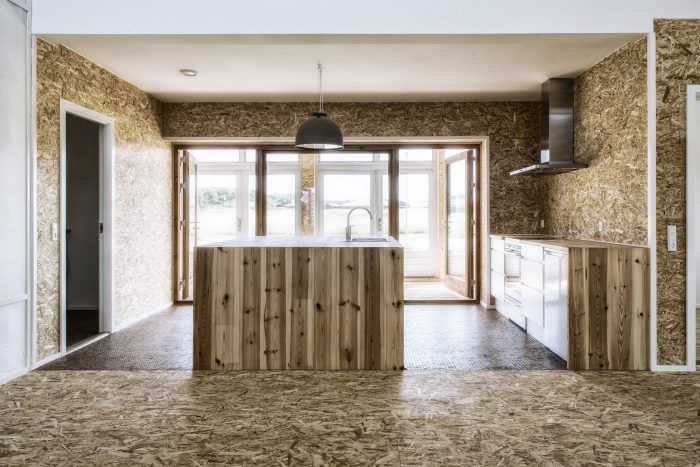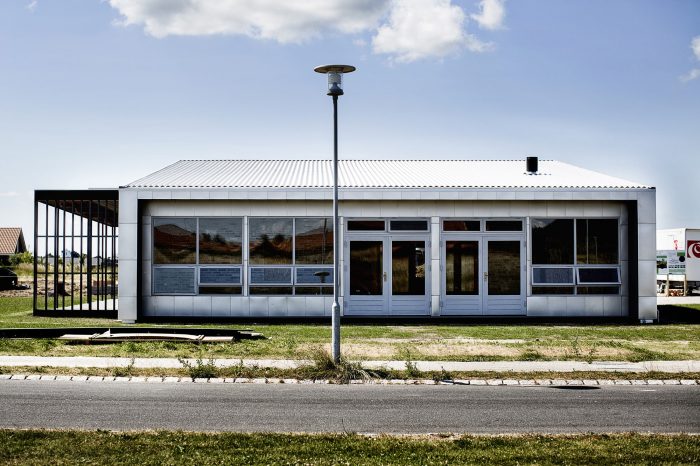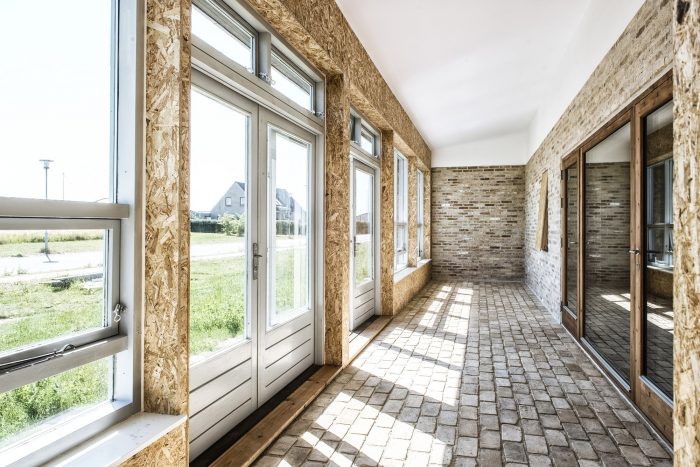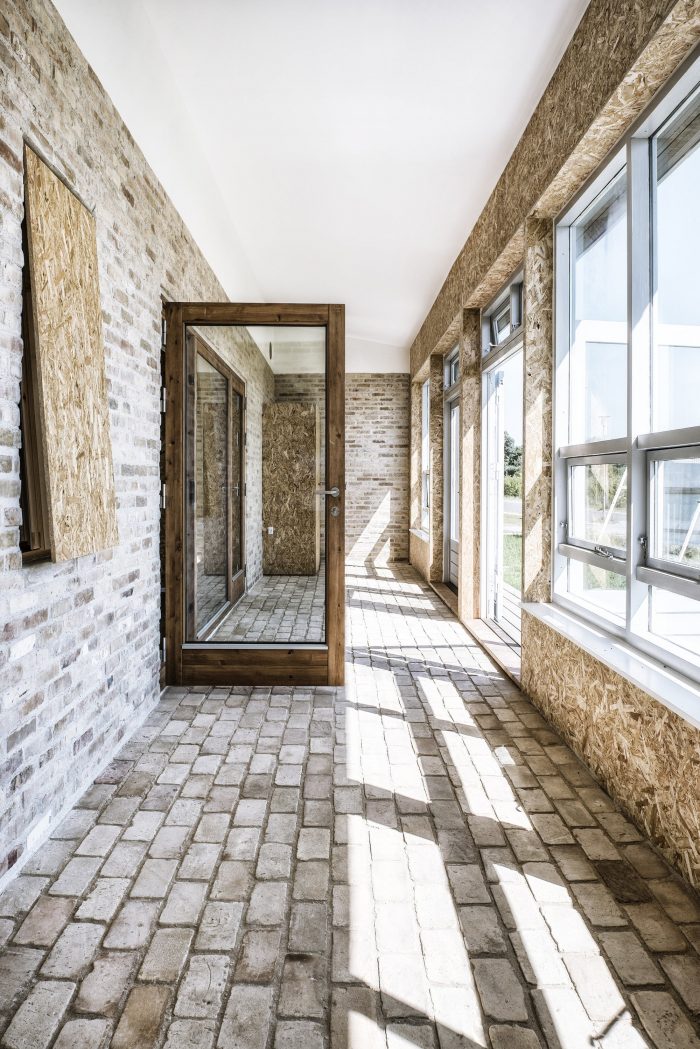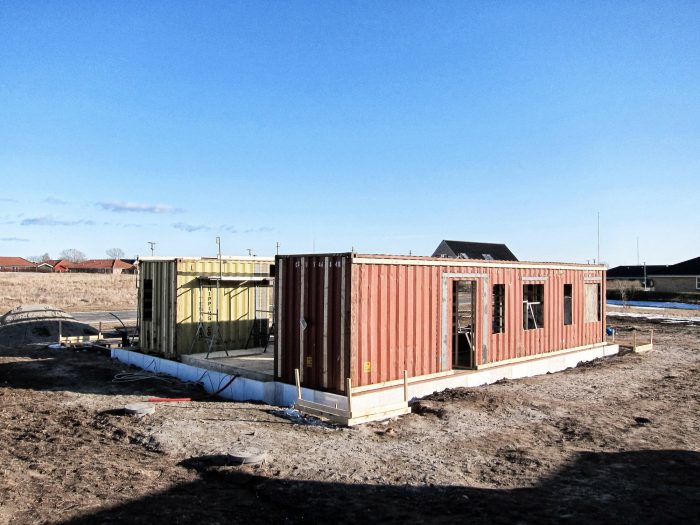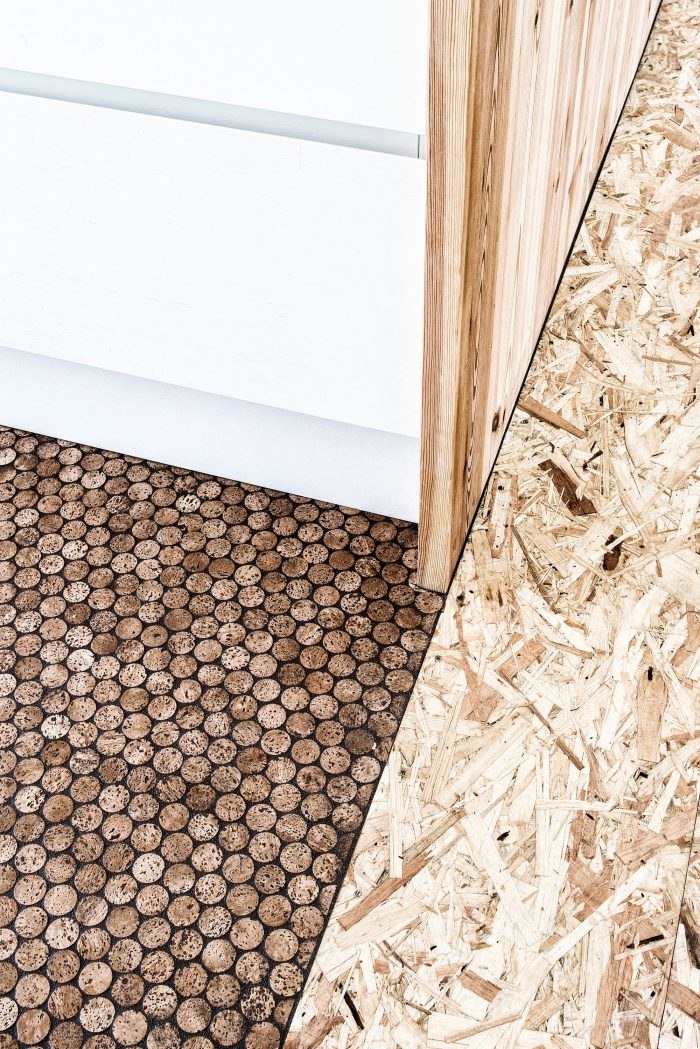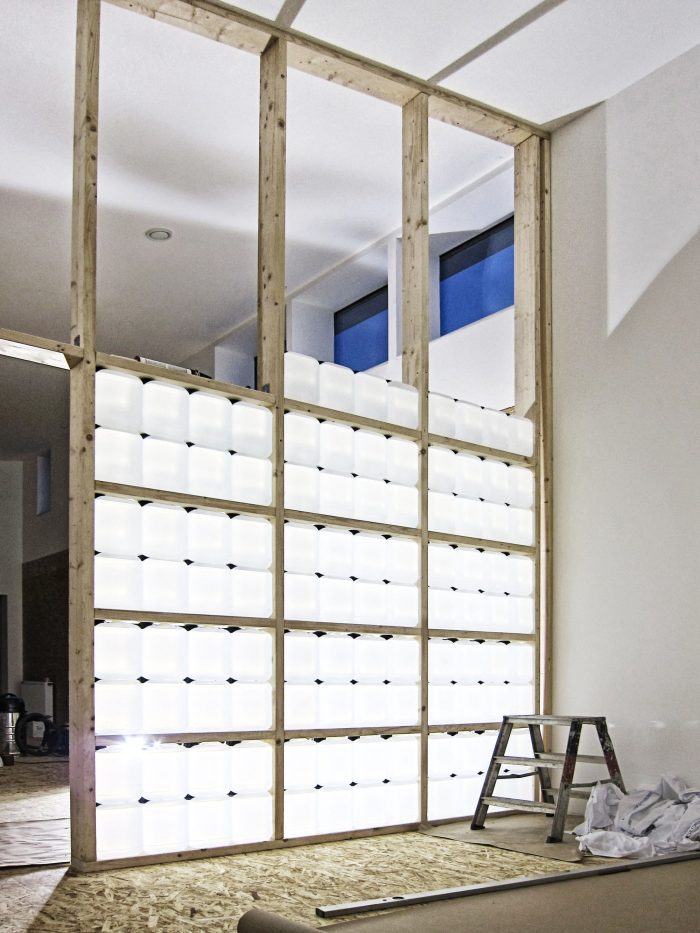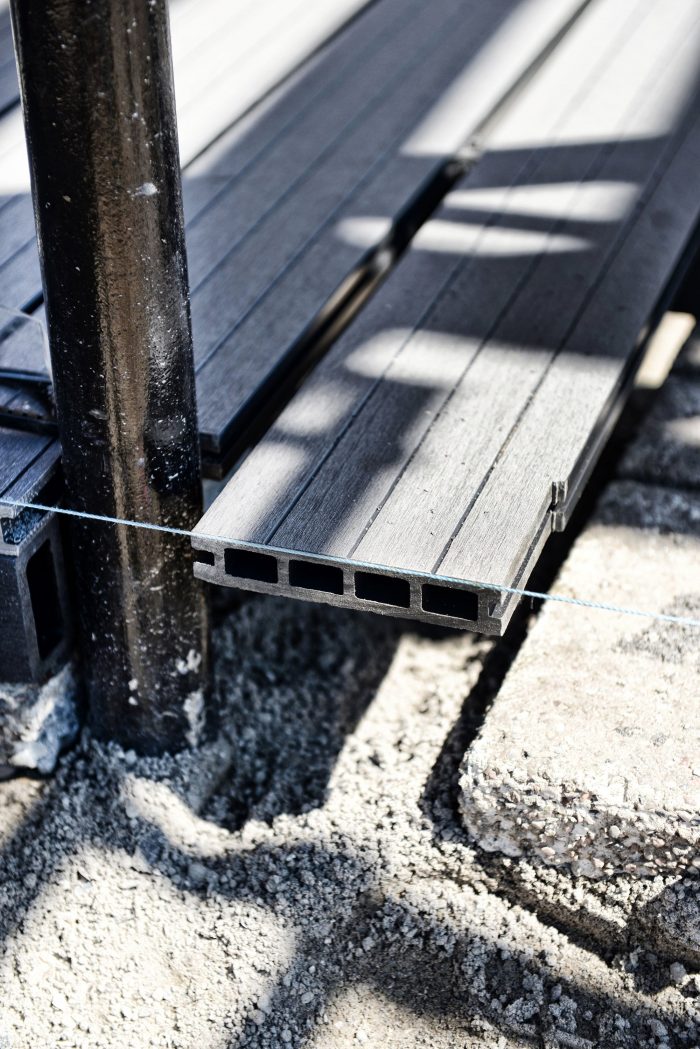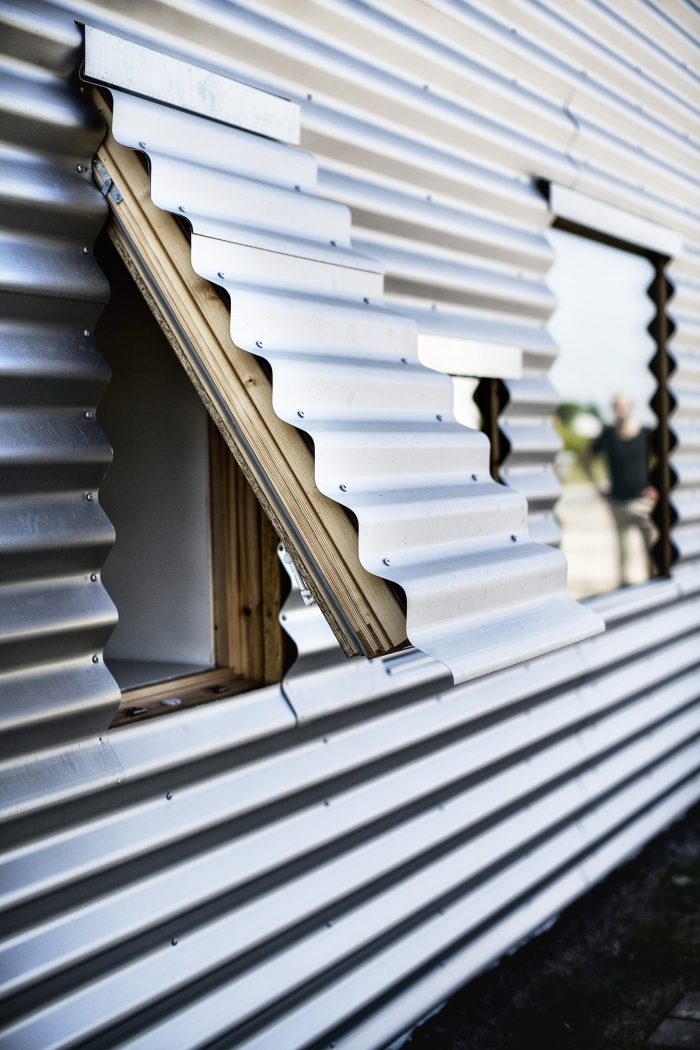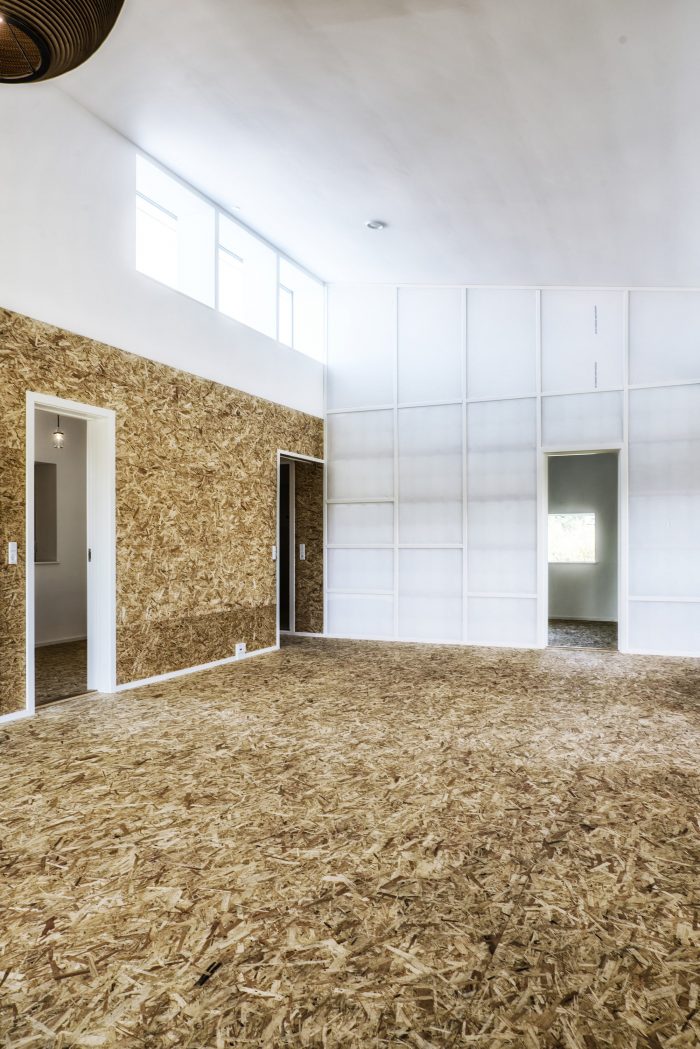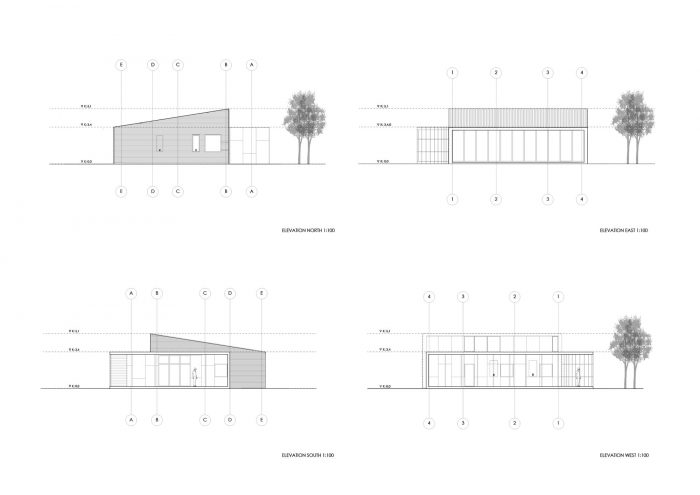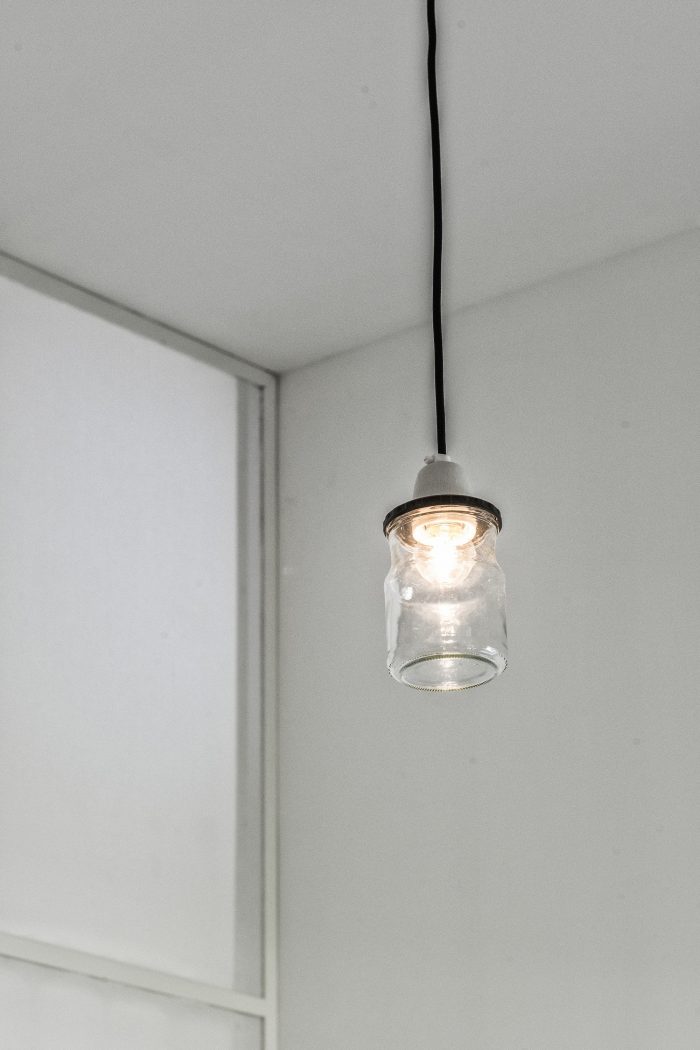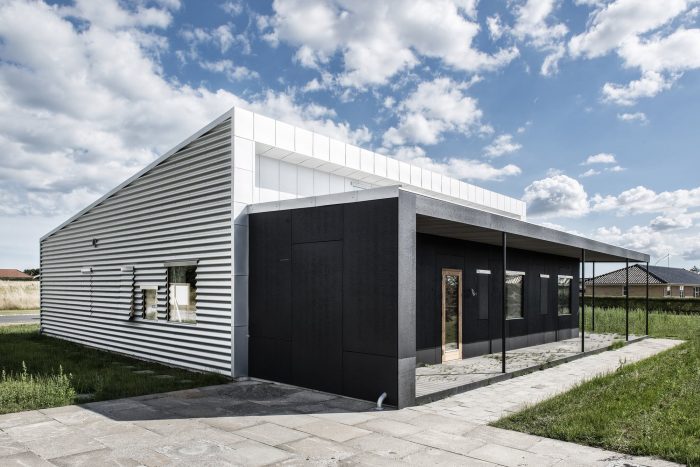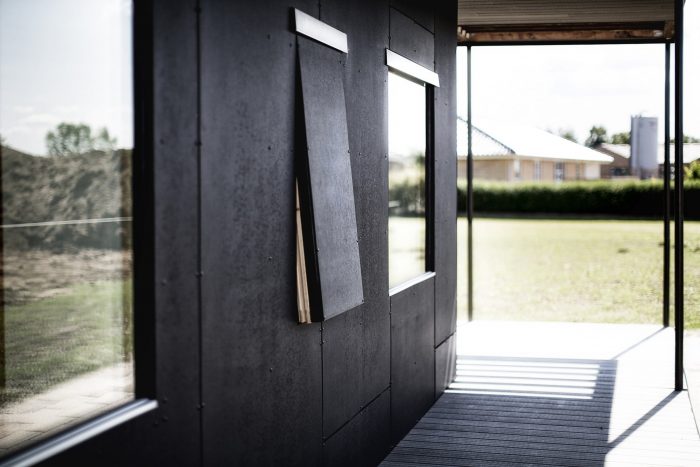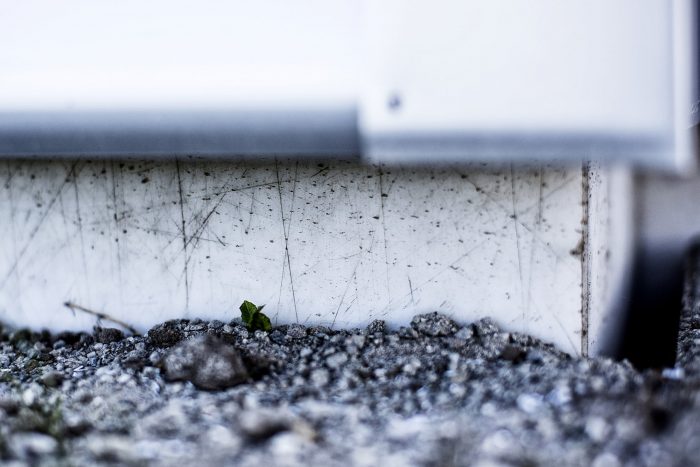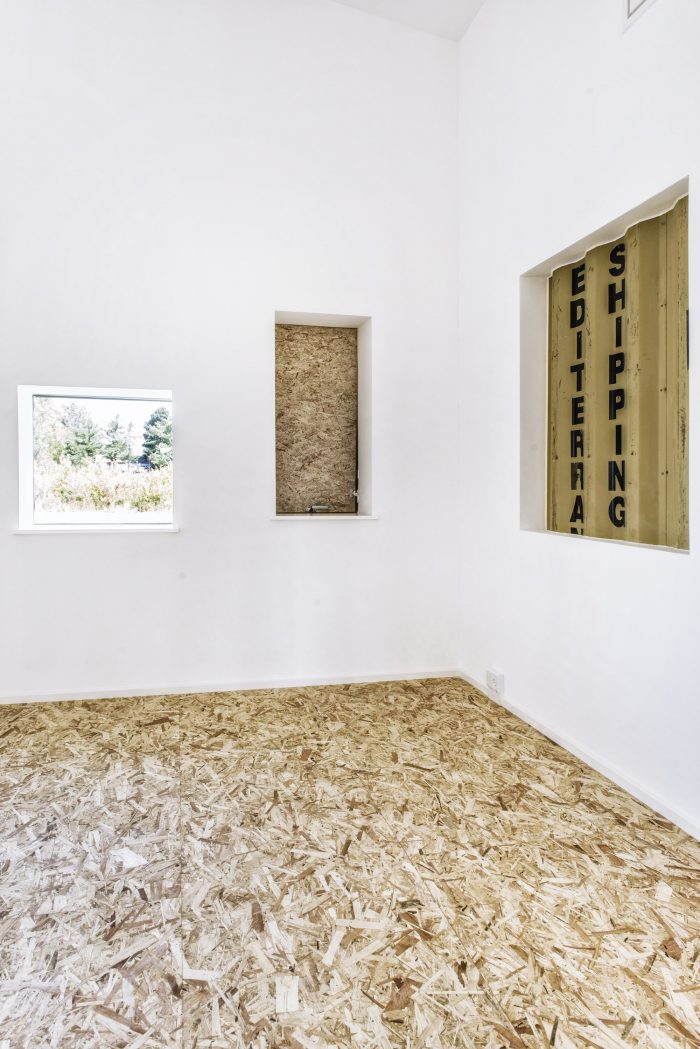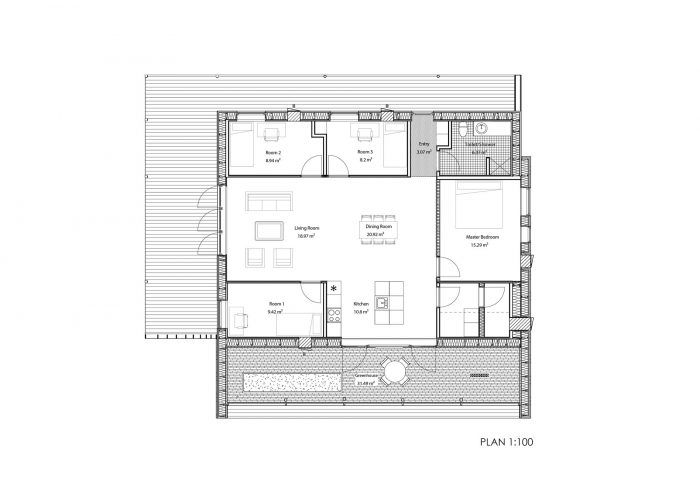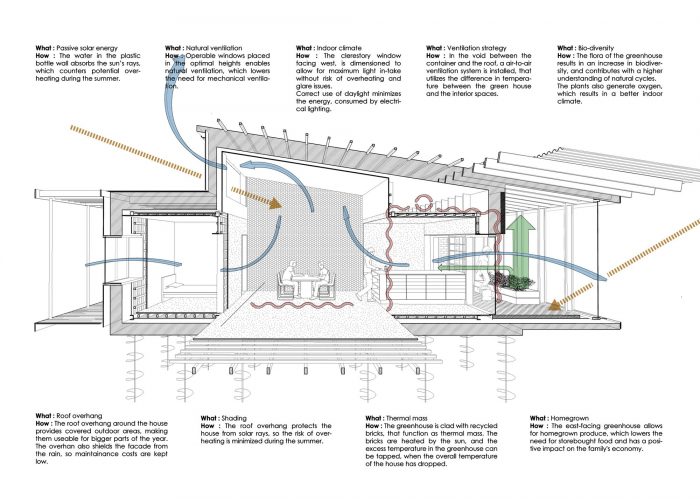Upcycle House是一个实验性项目,旨在通过使用回收和升级改造的建筑材料展示潜在的碳排放减少。 在Upcycle House的案例中,与基准房屋相比,减少了86%。
Upcycle House is an experimental project, aimed at exposing potential carbon-emission reductions through the use of recycled and upcycled building materials. In the case of Upcycle House, the reduction has been 86% compared to a benchmark house.
随着建筑在运行能耗方面的性能不断提高,现在的重点已经转移到与建筑有关的二氧化碳排放。
With increasing building performance in regards to operational energy consumption, focus has now shifted towards CO2-emissions related to construction.
升级改造是将废旧材料或废旧产品转化为高质量的新材料或产品的过程,从而减少生产,进而减少二氧化碳的排放。
Upcycling is the process of converting waste-materials or waste products into new materials or products of higher quality resulting in a reduction in production and therefore CO2-emissions.
因此,在建造房屋时,从材料回收的角度考虑对环境有利,因为材料已经排放了二氧化碳。甚至更好的是,开发一些流程,使垃圾或无用的材料能够被升级改造,重新用于新的建筑材料,其实用价值比原来更高。
When building houses, it is therefore environmentally beneficial to think in terms of material recycling, since the materials have already emitted CO2. It is even better to develop processes where garbage or useless materials can be upcycled and reused for new building materials of higher utility value than they had originally.
升级改造的房子。Realdania Byg(一个促进建筑业创新和良好实践的丹麦基金会)与Lendager建筑事务所合作,开发并建造了一栋名为Upcycle House的独栋别墅,以具体而明确的例子传达了升级改造的原则。
Upcycle House. Realdania Byg (a Danish foundation that promotes innovation and good practice in the building sector) has developed and constructed a single-family house with Lendager Architects called Upcycle House conveying the principles of upcycling in a tangible and clear example.
这座房子是用加工过的回收材料建造的,Upcycle House研究了通过尽可能地使用回收材料来减少二氧化碳足迹的实际可能性有多大。
The house is built of processed recycled materials and Upcycle House investigates how much it’s actually possible to reduce the CO2 footprint by using upcycled materials to the extent possible.
承重结构由两个预制的海运集装箱组成,而屋顶和外墙包层是由回收的铝制汽水罐制成。外墙板由消费后回收的颗粒纸组成,它们被压在一起并进行了热处理。厨房的地板是用香槟酒瓶留下的瓷砖铺成的,浴室的瓷砖是用回收的玻璃制成的。
The loadbearing structure consists of two prefabricated shipping containers, while the roof and facade cladding is made from recycled aluminium soda-cans. Facade panels, consist of post-consumer recycled granulated paper, which is pressed together and heat-treated. The kitchen floor is clad in tiled champagne cork-leftovers, and the bath tiles are made from recycled glass.
墙壁和地板由OSB板覆盖,OSB板由不同生产基地的生物制品木片组成,不用胶水压制在一起。回收的材料不是很明显,房子也没有散发出回收的外观–房子的外观和功能与用传统材料建造的现代房子一样。
Walls and floors are covered with OSB-panels consisting of wood-chips that are bi-products of various production sites, pressed together without glue. The recycled materials are not very visible and the house does not radiate a recycled look – The house looks and functions like a contemporary house built of conventional materials.
Upcycle House的最初工作是在车间里进行的,在那里切割窗孔,并在集装箱上安装浴室和厨房的水管和电线。集装箱只是作为房子的结构框架。到达尼堡的现场后,集装箱被分开放置,形成一个中央的生活空间、用餐空间和主卧室。
The initial work on Upcycle House takes place in the workshop where window holes are cut, and the containers are fitted with plumbing and wiring for the bathroom and the kitchen. The containers only serve as the constructive frame of the house. Upon arrival at the site in Nyborg, the containers are placed apart, shaping a central living space, dining space and master bedroom.
这两个集装箱的外部是绝缘的,使回收的结构框架不可见。其结果是一个129平方米(1390平方英尺)的房子,旨在为一个家庭的日常生活创造最佳环境。这座房子有一个大客厅,与一个宽敞的厨房相连,一个主卧室,三个小房间,浴室,公用事业室和一个被动冷却室。除此之外,房子还配备了一个毗邻厨房的大温室和一个朝南的大露台。
Anders Lendager(Lendager建筑事务所的老板)对使用回收材料的结果进行了评论。”我们最初认为减少65%的二氧化碳是不现实的,但当我们对整个项目的所有材料进行生命周期评估时,结果发现,与基准房屋相比,我们减少了与建筑有关的86%的二氧化碳排放。考虑到这一点,我们感到惊讶的是,没有人在做这方面的工作。为什么它不包括在我们作为建筑师所做的一切中呢?为什么不把一定比例的建筑材料必须回收的规定列入建筑法规中?”
The two shipping containers are insulated on the outside, making the recycled structural framework invisible. The result is a 129 sq. meter (1390 sq. feet) house that is designed to create the optimal setting for a family’s everyday life. The house features a large living room connected to a spacious kitchen, a master bedroom, three smaller rooms, bathroom, utility room and a passive cooling chamber. In addition to this the house is also fitted with a large greenhouse adjacent to the kitchen and a large south-facing terrace.
Anders Lendager (owner of Lendager Architects) comments on the results of using recycled materials: “We initially thought that a reduction of 65% CO2 was unrealistic, but when we ran the LCA (Life Cycle Assesment) on all materials throughout the entire project, it turned out that we had reduced the CO2 emissions associated with construction with 86%, compared to a benchmark house. With that in mind, we are surprised that no one else is working on this. Why is it not included in everything we do as architects? Why is it not included in the building code that a certain percentage of building materials have to be recycled?”
被动的可持续性。除了材料方面,Upcycle House旨在通过一系列的可持续发展功能来减少排放。由于项目的经济性有限(1,700万挪威克朗),所以特别强调房屋的被动特性。因此,Upcycle House的设计考虑到了方向、温度区域、日光优化、遮阳和自然通风。
Passive sustainability. Besides the material approach, Upcycle House aims to reduce emissions through an array of sustainable features. Due to the limited economy of the project (1,7 Mil Dkr.) a special emphasis has been put on the house’s passive properties. Therefore Upcycle House is designed with orientation, temperature zones, daylight optimization, shading and natural ventilation in mind.
这使得单户住宅的排放量大大减少,同时也在普通家庭的经济承受范围之内。为了说明这种房子的潜力,该团队做了一个粗略的计算。
This makes for a single family house with a significant reduction in emissions, that is also well within economic reach of the average family. To illustrate the potential of this house, the team did a rough calculation:
Upcycle House的二氧化碳排放量为0.7KG CO2/M2/YR,而基准房屋的二氧化碳排放量为5.0KG CO2/M2/YR。在丹麦,每年有10,000个独立的家庭住宅建成。如果减少4.3KG CO2/M2/YR,平均建筑面积超过130平方米,则每年可能减少5590吨二氧化碳。
The CO2 emission from Upcycle House is 0,7 KG CO2/M2/YR compared to 5,0 KG CO2/M2/YR for a benchmark house. In Denmark 10.000 single family homes are built every year. With a reduction of 4,3 KG CO2/M2/YR and an average floor area well over 130 sq. meter this makes for a potential reduction of 5590 tons of CO2 – per year.
Architects: Lendager Arkitekter
Area : 129 m²
Year : 2013
Photographs : Jesper Ray, Polfoto
Contractor : Egen Vinding & Datter
Architect In Charge : Lendager Arkitekter
Design Team : Anders Lendager, Christopher Carlsen, Jenny Haraldsdottir, Rune Sode, Morten Bang, Ronnie Markussen, Anna Ziober, Hasse Schou
City : Nyborg
Country : Denmark

